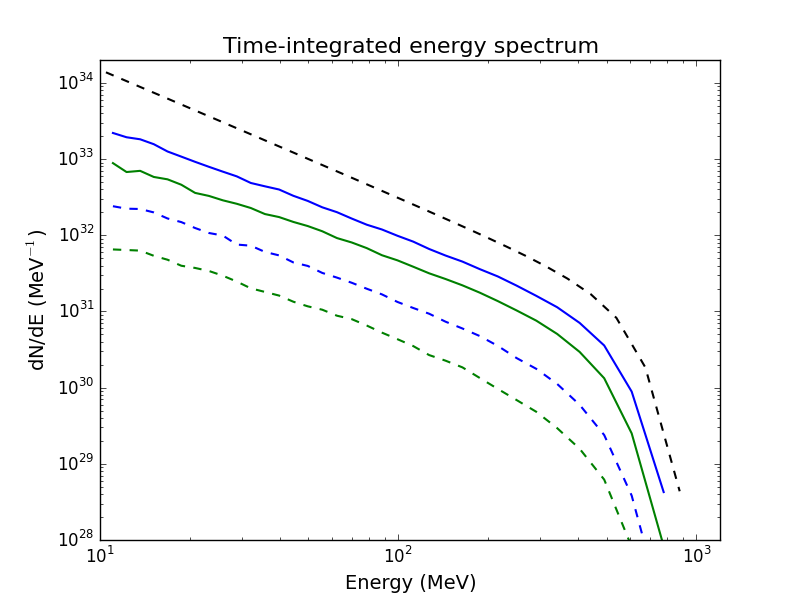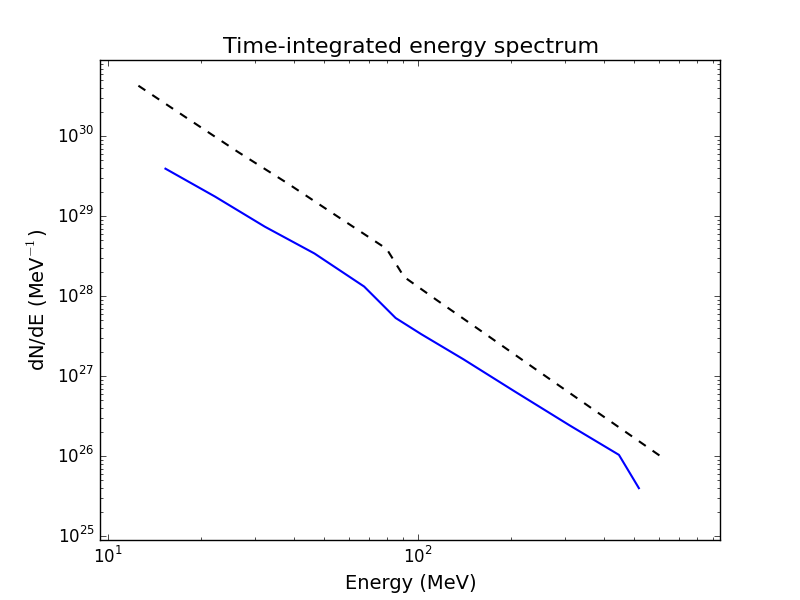We performed simulation of the 17 May 2012 Ground Level Enhancement event. The shock wave propagation was analysed empirically (Rouillard et al. 2016). We fitted the shock parameters for more than 100 field lines connected to the shock and used them in CSA simulations for more than 10 field lines to assess the spectrum of accelerated protons and the shock. Field lines where the shock had highest Mach numbers led to relativistic protons accelerated at the shock. One example of CSA simulations is presented in the figure below.

The simulated proton distribution (black dashed curve in the figure below) was fed to the DSP code. We used different transport parameters in the DSP model to compute the particle energy spectrum precipitating at the Sun. The solid curves in the Figure are computed for a radial magnetic field and the dashed colored curves for an over-expanding flux tube, where the area increases by an additional factor of three from the coronal base to the source surface. The blue color indicates a high and the green color a low value of the mean free path between the shock and the Sun. About three to five orders of magnitude higher fluence of >500 MeV protons than required by Fermi/LAT observations (2 x 1027) was propagated to the solar surface. Our model most likely underestimates the loss of protons to the upstream region and overestimates the spectrum at the shock and, thus, numbers precipitated at the Sun, but we regard this over-prediction of the modeling as an indication that shocks are capable of producing enough particles to explain the long duration gamma-ray events detected by Fermi/LAT.

When we fitted the same event with the SaP + DSP codes, we obtained a precipitated spectrum, which was about one order of magnitude lower than the observation of Fermi/LAT. This indicates that protons are not most effectively accelerated on the Earth-connected field line but on other ones with stronger shock.

Data files that provide the particle spectra at the shock as a function of time (both SaP and CSA models) and the computed total precipitated proton spectrum at the Sun (time integrated) can be found here. All files contain a header which explains the contents.

 hesperia [dot] info [at] hesperia-space [dot] eu
hesperia [dot] info [at] hesperia-space [dot] eu










